Using Negative Space
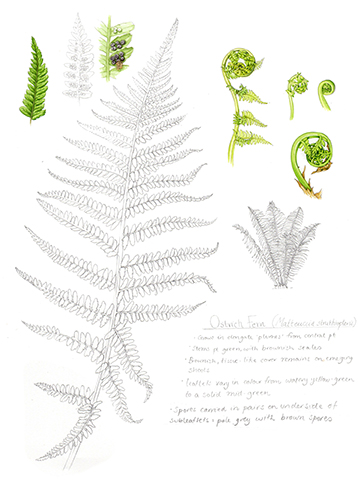
Natural history illustration requires the illustrator to draw accurately and with confidence, and using negative space can help with this.
It’s a tool I use every day.
The easiest way to think of negative space is as the space between and around objects; the triangles between spokes of a bike wheel, the ovals in the handles of scissors, the shapes made by overlapping leaves. Here’s a demo I did for a botanical illustration workshop recently.
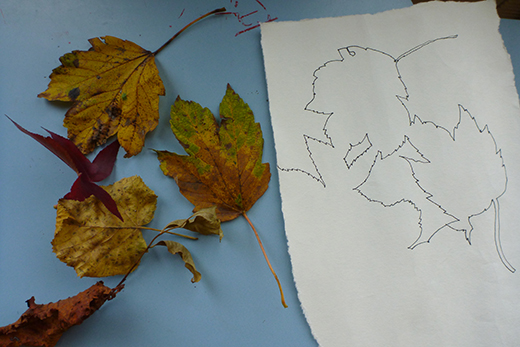
Demo
Learning about Negative space
I first learned about it from my mother, a fine artist, and then far more from Drawing on the Right Side of the Brain by Betty Edwards. Although originally published many years ago, the ideas in this book are still current and formed not only the basis of a recent children’s workshop I ran, but also of courses run in the UK by Anna Black.
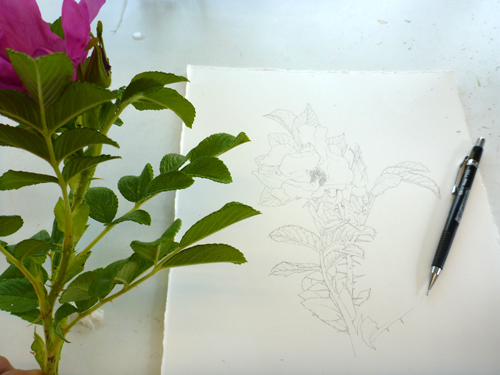
Using negative space to illustrate a rose
Painting a rose is one of the times I rely heavily on negative space; plotting in the spaces between the leaves and the stems. Negative space is such a handy tool; if ever I’m totally stuck as to what a line should do, if I just concentrate on drawing the shape of the space that surrounds the object, then I can sort it out.
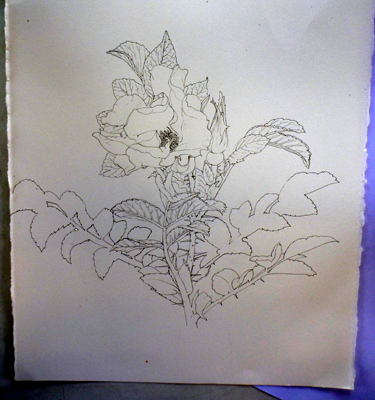
Drawing of rose, heavily reliant on using negative space
(For more on the evolution of this illustration, check out my blog from 2013).
Drawings of negative space can be gorgeous and strong, and can stand alone, like this 10 minute sketch done by a 12 year old on my drawing course.
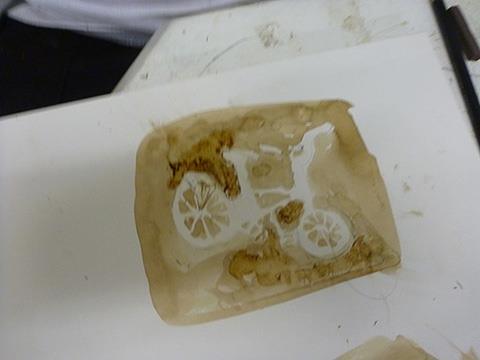
Child’s illustration of bicycle using negative space
Other times I rely heavily on negative space is when drawing up a plant with a whole load of tiny parts, an elder flower, the leaflets of a fern, or the needles of a douglas fir.

Ostrich Fern Matteuccia struthiopteris from The Garden Forager by Adele Nozedar
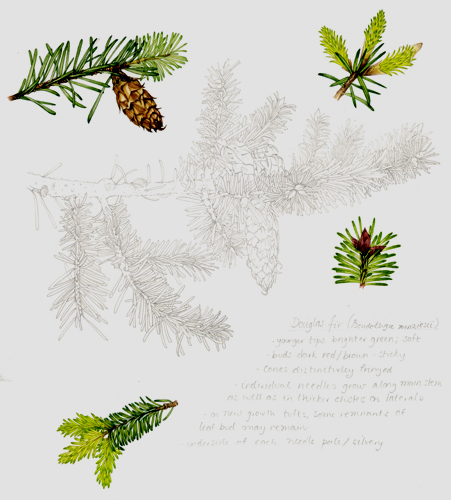
Douglas Fir Pseudotsuga menziesii from The Garden Forager by Adele Nozedar
Using negative space for other subject matter
It’s not just plants that benefit from a touch of negative space; the shapes between hairs on an insect leg, shapes formed where space touches the edge of a bird’s feathers, the dark spaces between teeth inside the mouth of a mammal…
For a good tutorial in using negative space, please check out the tutorial by Marian Boddy-Evans.
Without using negative space my job would be a great deal harder; and give me less pleasure. I love the way drawing negative space gives you a feeling like you’re cheating, you’re beating your drawing, and it always feels brilliant to have such an effective tool in your illustrating toolbox.


Thanks re my negative space tutorial; that’s been floating around a while — since 2006 according to the date on my illustrations.
Perhaps the most powerful use of negative space I’ve seen was figure painter Alan McGowan using it to carve, with one long, considered stroke of a flat brush, the profile of the sitter more accurately.
Hi Marion
My absolute pleasure. I love the internet, because other skilled artists have often already done an excellent job explaining whatever it is you want to discuss – and you can just link to their work. SO useful. I shall go and have a look at the work of McGowan; I’d not heard of him before and this sounds interesting. Thankyou! X